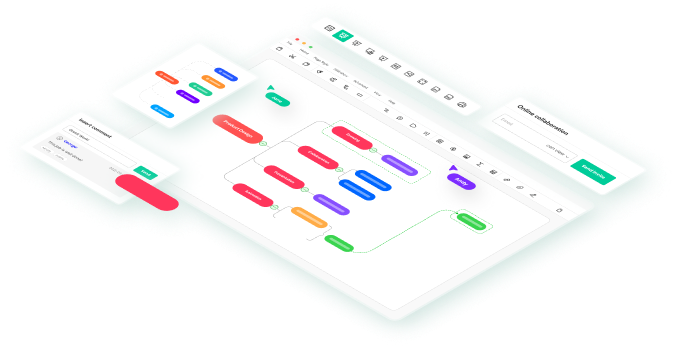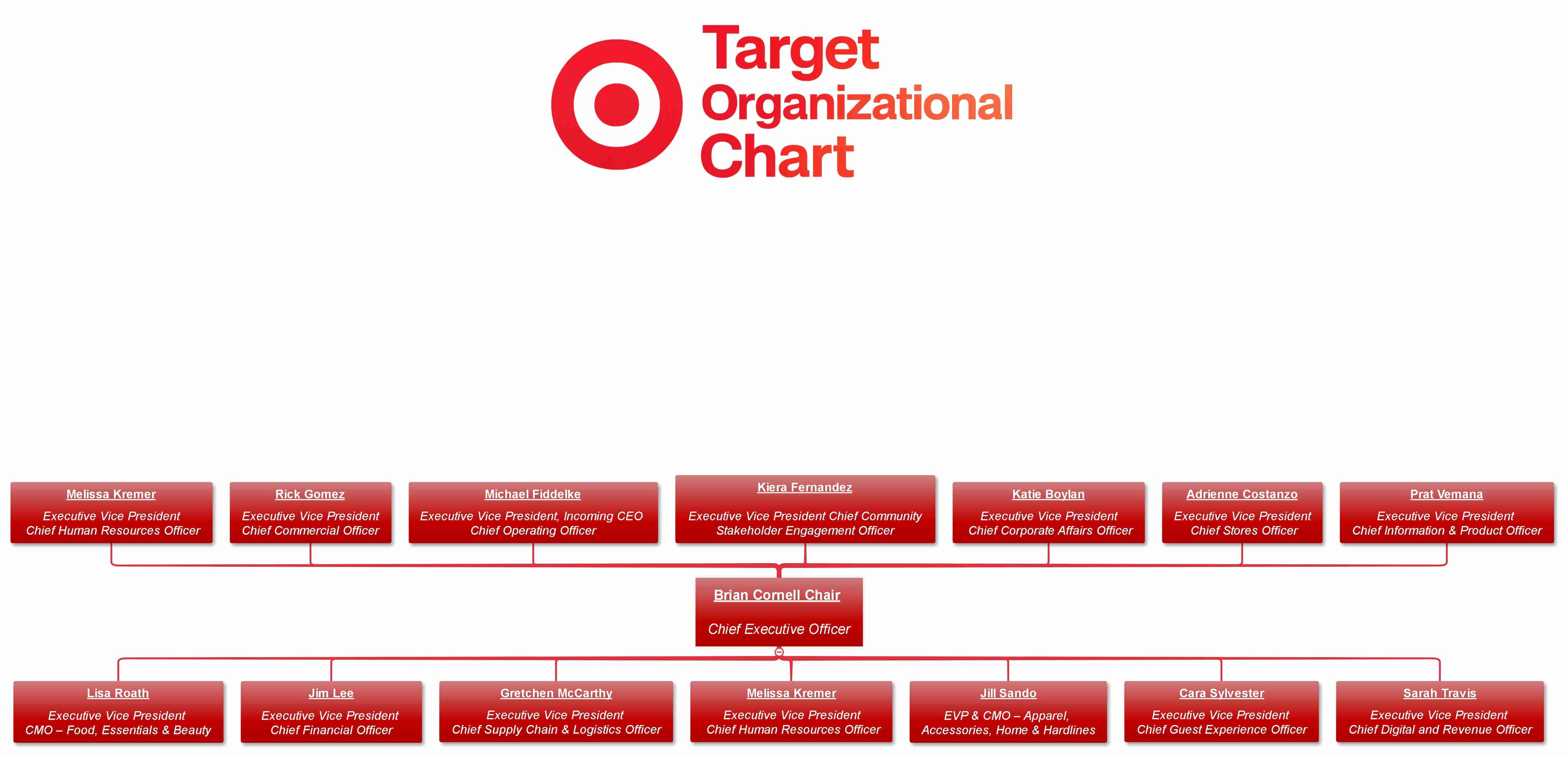Target Corporation is an American retail company that began its journey in 1902 as the Dayton Dry Goods Company in Minneapolis, Minnesota. Its founder, George Dayton, aimed to build a brand that delivered value and quality while fostering community trust. After the success of Dayton Dry Goods, a discount store under the name ‘Target’ was launched in 1962 in Roseville, Minnesota.
Let’s take a closer look at Target Corporation’s organizational chart to see where its strengths lie and how it has maintained its leadership position in the retail industry.
In this article
Target’s Organizational Structure
Target Corporation has over 1,900 stores located in various parts of the United States. But despite its large size, it’s led by a relatively small leadership team.
At the top of the hierarchy is the Chair and Chief Executive Officer, who is supported by Executive Vice Presidents. These EVPs are responsible for the operational oversight of key areas like Growth, Food and Beverage, HR, and Communications.
Like most large organizations, Target is also overseen by a board of directors. These directors are selected by stakeholders to oversee the business and other affairs of the company. Their role is mostly advisory, but some of them do have greater responsibilities based on their expertise.
Here’s a breakdown of Target’s organizational structure.
1. Structure Type
Target operates with a matrix organizational structure. This setup employs both functional and divisional structures, stressing dual reporting and improved collaboration across departments. Let’s analyze how these different structures help in creating an effective organizational hierarchy.
Functional Structure
A functional organizational structure is all about specialization. At Target, employees are grouped on the basis of specialized functions or departments, including marketing, finance, human resources, information technology, supply chain, and store operations, among others.
Each department has a clear hierarchy, with various levels of management and staff. Since the lines of authority and responsibility and clear, each department head who oversees the function’s operations reports to the executive leader above them.
Divisional Structure
In a divisional structure, the organization groups business activities based on products, services, locations, or markets. Each division holds a semi-autonomous position and is awarded a set of resources and functions unique to that business activity.
This structure is mostly used for businesses that offer a wide range of products and operate in many different markets. Under the divisional structure, each team is completely focused on specific products, regions, or markets. They are also better equipped to respond to any changes in the activity promptly and efficiently.
Target’s divisions include Apparel & Accessories, Beauty & Wellness, Home, Electronics, and more. Each division is steered by a divisional leader who reports to the executive above them.
Target’s Matrix Structure
Target combines the benefits of both functional and divisional organizational structures by following the matrix structure. Employees at Target report to their divisional leaders, who oversee specific product categories or locations, as well as their functional managers, who oversee specific functions and departments.
This way, Target is able to facilitate cross-functional collaboration and improve efficiency across the organization. With more resources and expertise at every department’s disposal, the decision-making process is swifter and more effective.
So, in essence, the functional structure supports specialized support and coordination, while the divisional structure allows corporate heads to focus on specific business areas.
2. Number of Employees
Target runs over 2,000 stores and 66 supply chain facilities across the U.S., with more than 400,000 team members, including full-time, part-time, and seasonal staff. Even with such a big team, the company works hard to keep everyone involved and motivated.
Target believes in a purpose-driven culture and gives team members chances to grow and move forward in their careers. It also focuses on creating a workplace where people feel like they belong. Employees are encouraged to speak up and know their voices matter. To support this, Target offers career development programs, training, and helpful resources so team members can do well and keep moving forward.
3. Key Executives
Target’s hierarchy begins with its CEO, Brian Cornell, and is followed by Vice Presidents who oversee different business functions. Here are some members of Target’s top-tier management.
Brian Cornell - Chair and Chief Executive Officer
Brian joined Target in 2014 and led the company in enhancing its digital and supply chain capabilities. With his vision, Target managed to secure a leading position in both physical retail and digital fulfillment. But his focus isn’t limited to financial growth. He has also invested in wages, benefits, and team training to improve Target’s workforce and culture.
Katie Boylan - Executive Vice President and Chief Corporate Affairs
Katie joined Target in 2011 and, after working in various communications leadership capacities. She was recently appointed Chief Communications Officer at Target. In this role, she is responsible for designing communication strategies that help build and protect the company’s reputation.
Rick Gomez - Executive Vice President and Chief Commercial Officer
Rick joined Target in 2013, and four years later, was promoted to the executive leadership team. As the Chief Commercial Officer of Target, Rick’s job is to oversee the company’s multicategory merchandise assortments, including apparel and accessories, food and beverages, home, beauty, etc.
Jim Lee - Executive Vice President and Chief Financial Officer
Jim joined Target in 2024 after working in finance, business, and strategy for over 25 years. He has worked with several popular brands, such as PepsiCo, Celsius Holdings, and Tropicana Brands Group. Jim’s role at Target involves overseeing corporate finance, enterprise strategy, partnerships, and corporate development.
4. Structural Adaptability
Since Target follows a matrix organizational structure, adaptability is one of its biggest strengths. This remarkable agility has helped the company evolve over the past decade, while maintaining its competitive edge.
With shifts in consumer behaviour and supply chain demands, initiatives like omnichannel retailing and turning stores into mini-fulfillment centers have shown that Target is fully capable of transforming its structure to meet the needs of today’s evolving retail environment.
Why Does Target's Structure Work?
Target’s current structure strikes a good balance between centralized leadership and cross-functional collaboration. This ensures a lean cost structure, which is critical for a retail brand as massive as Target. Here are a few elements of Target’s structure that support its operational efficiency while maintaining agility.
- Encourages Collaboration: Target’s matrix structure connects functional teams with regional and product divisions. This collaboration helps inject new perspectives into the system and facilitates sharing.
- Supports Omnichannel Strategy: The company combines store operations, digital retail, and supply chain under a single system. This way, the company can ensure a consistent customer experience across all selling platforms.
- Enables Quick Decision-Making: When functional and divisional leaders are all equipped with decision-making powers, implementing innovative initiatives becomes easier and more effective.
- Ensures Accountability: Target’s organizational structure highlights individual roles and hierarchy clearly. This instills ownership among employees and encourages them to work with complete transparency.
How to Make Such an Org Chart?
If you’re planning to create an organization chart for Target, here is a quick guide to get you started.
Collect Information
- The first step is to gather data from official sources like internal directories, HR databases, and organizational policies.
- Identify key team leaders, departments, and reporting relationships.
- Understand their roles and the connection between them. You should also highlight reporting lines at this point.
Determine a Structure
- Pinpoint the type of structure the company follows between functional, divisional, and matrix structures.
- Only include key persons, teams, or departments. Adding unnecessary detail can make it appear overwhelming, so avoid cluttering the diagram.
Choose the Right Tool
- Selecting a reliable drawing tool is important when creating an organizational chart. You can choose from EdrawMind, Lucidchart, Miro, or Microsoft Visio to build charts quickly.
- Focus on ease-of-use, prebuilt templates, and collaborative features when deciding between tools.
- EdrawMind’s interface is easy to understand and use. It also offers prebuilt templates to help you kickstart projects quickly..
Steps to Create the Target Organizational Chart
Step1 Open EdrawMind and Add a Title
- Open EdrawMind online or on your desktop.
- Click Create and choose Blank Mind Map.
- Select a layout and add a title.
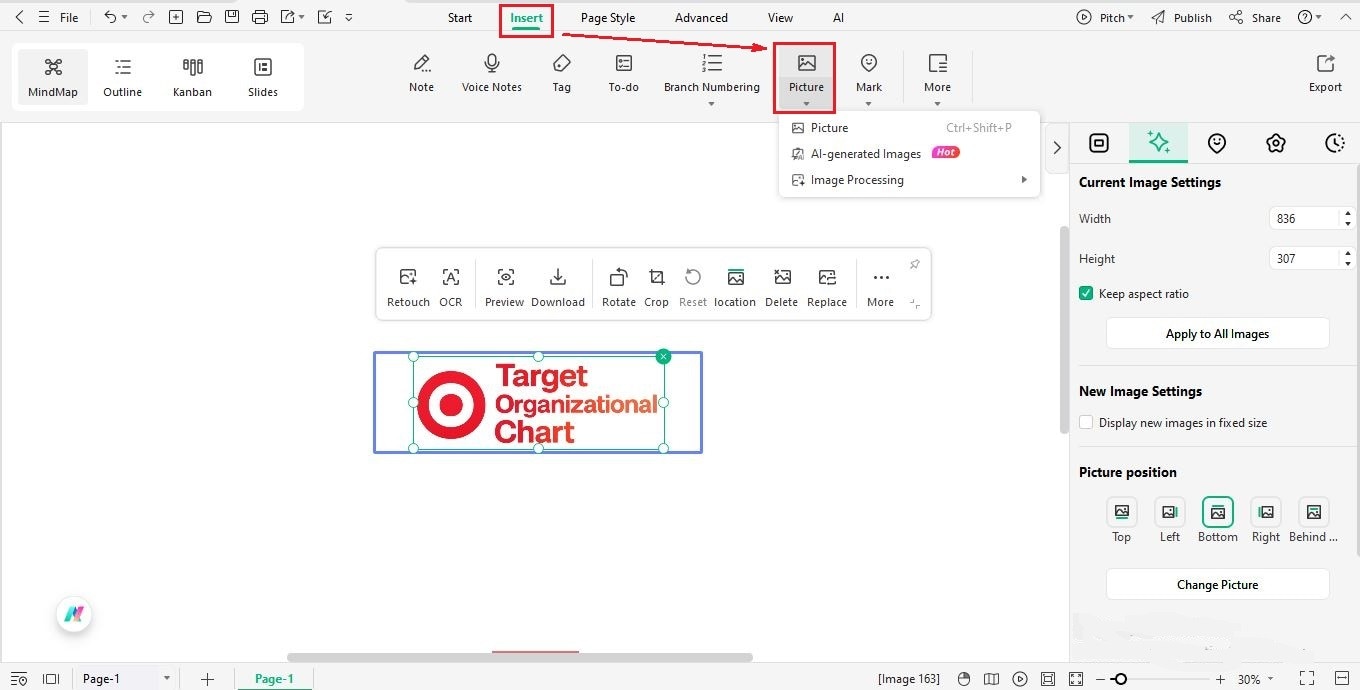
Step2 Add the Top Leadership
- In the center/top node, type Brian Cornell (Chief Executive Officer).
- This will be your main/root node.
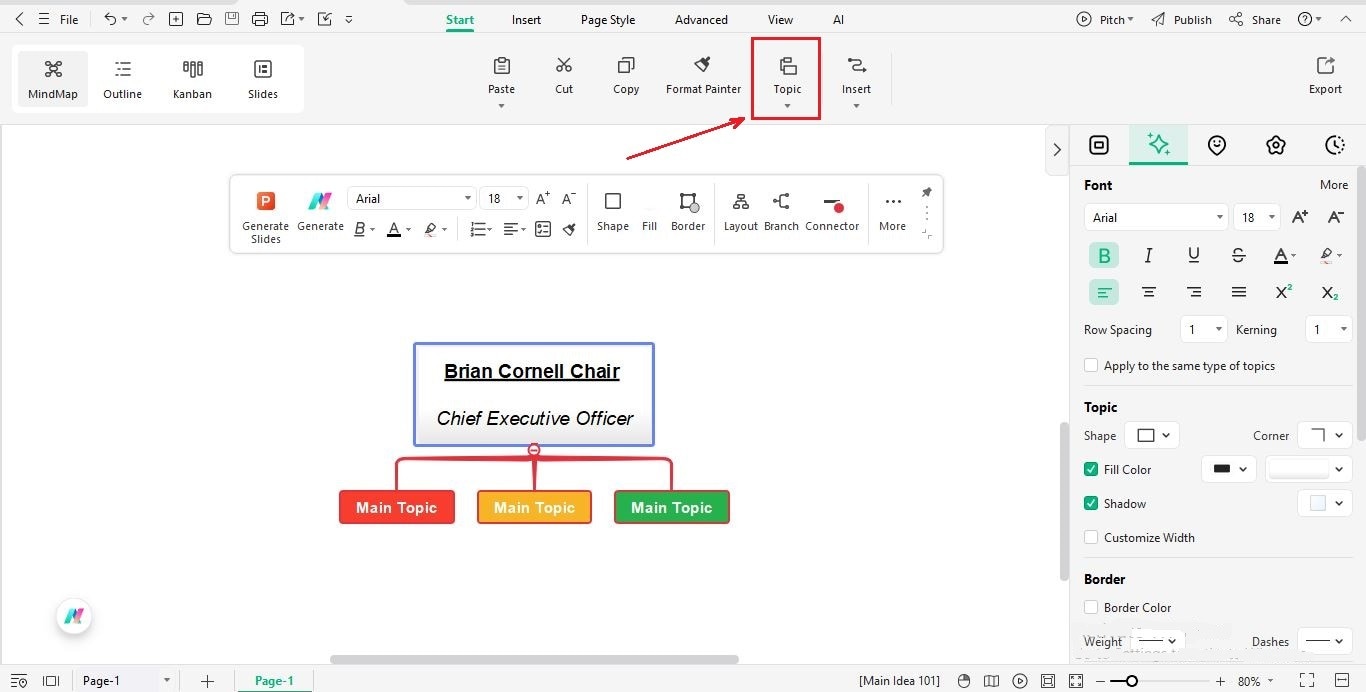
Step3 Add the First-Level Executives (EVPs)
- Add seven sub-branches from the CEO node for adding the first-level EVPs.
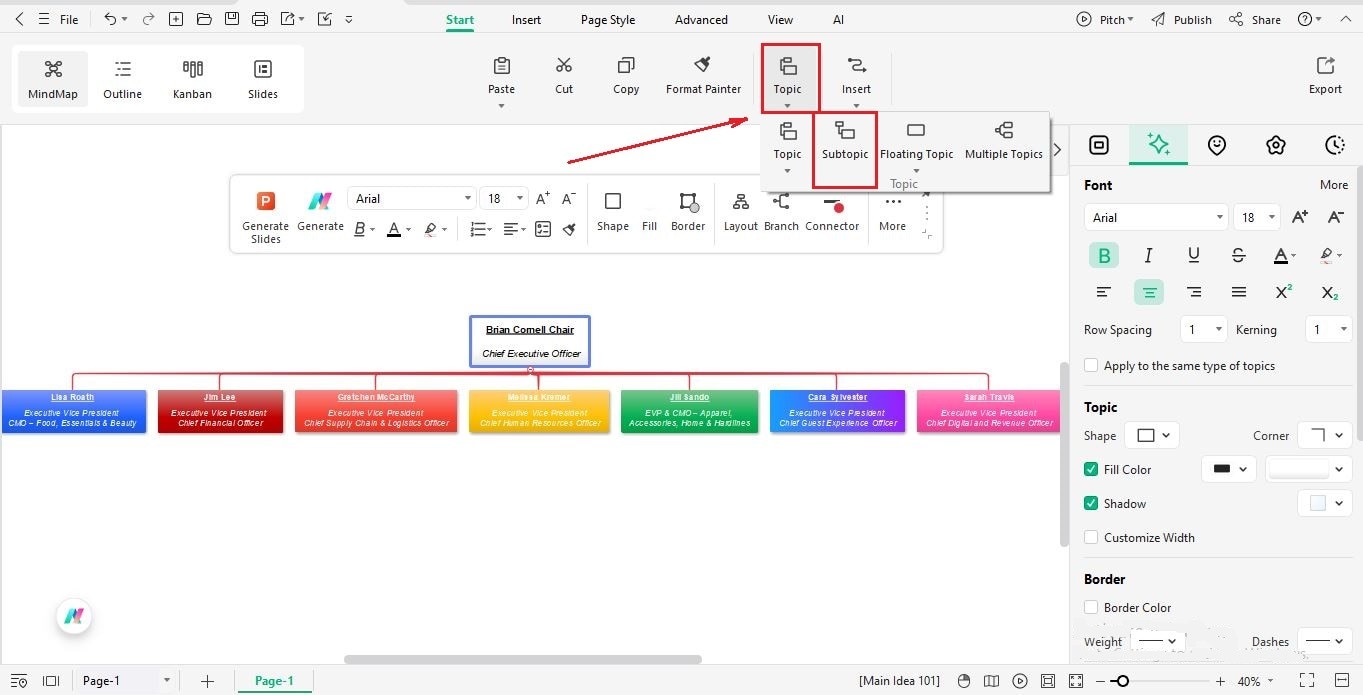
Step4 Add the Second-Level Executives
- From the CEO node, add another row below (connected separately or through the same hierarchy).
- Similarly add the second-level executives.
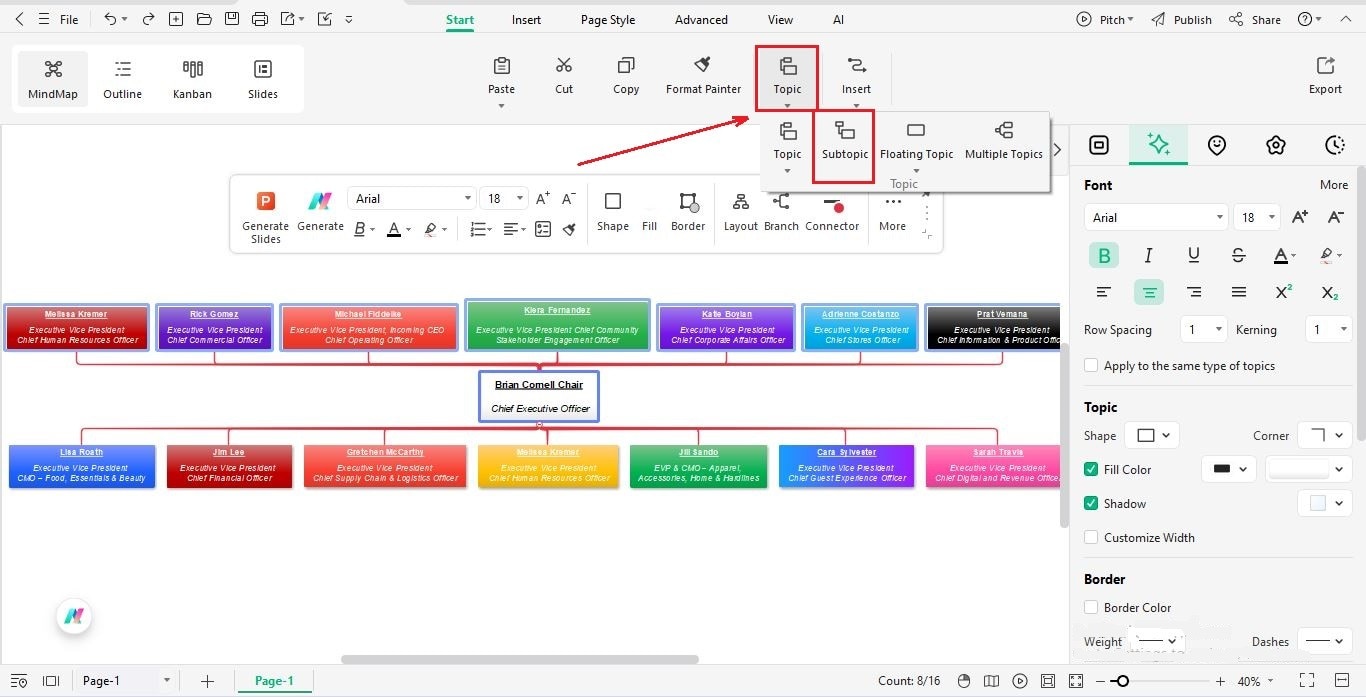
Step5 Customize the Design
- Change node colours to red gradient (matching Target’s theme).
- Use bold text for names and italics for titles.
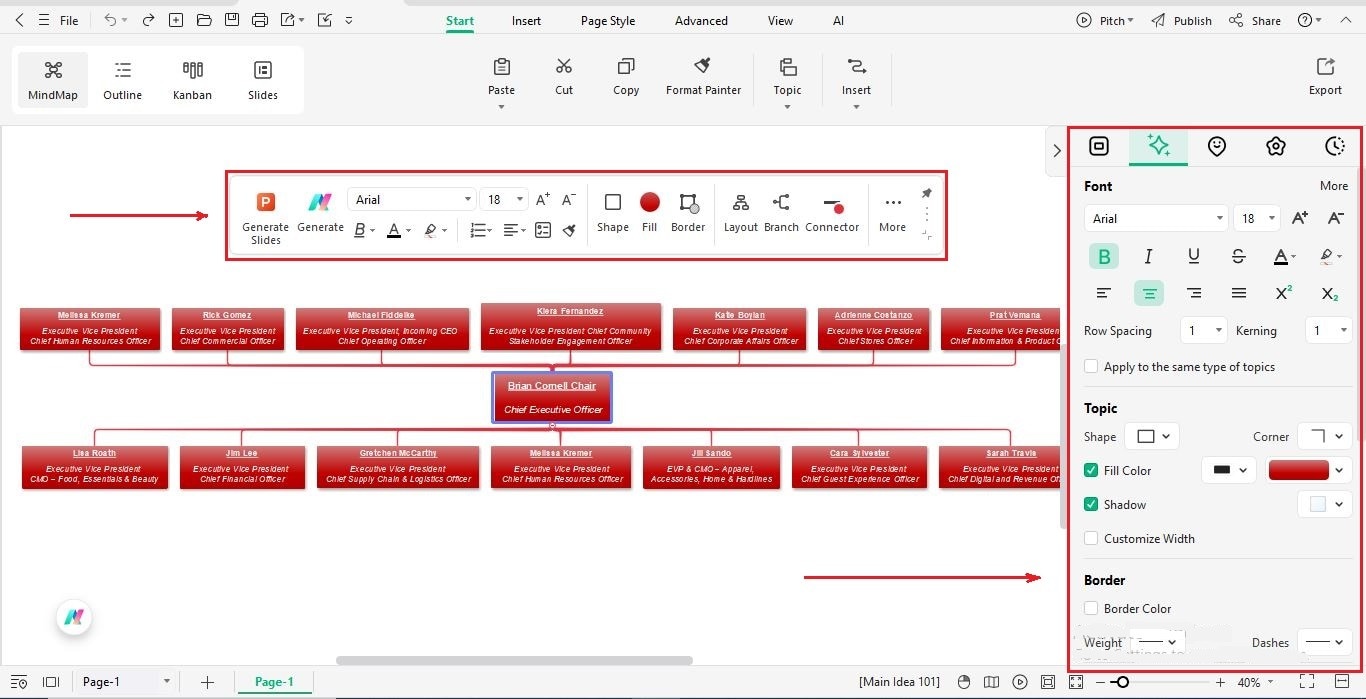
Step6 Review and Export
- Check for accuracy in hierarchy and titles.
- Export your chart as PNG, PDF, or PPT.
- Save it in your EdrawMind cloud for collaboration.
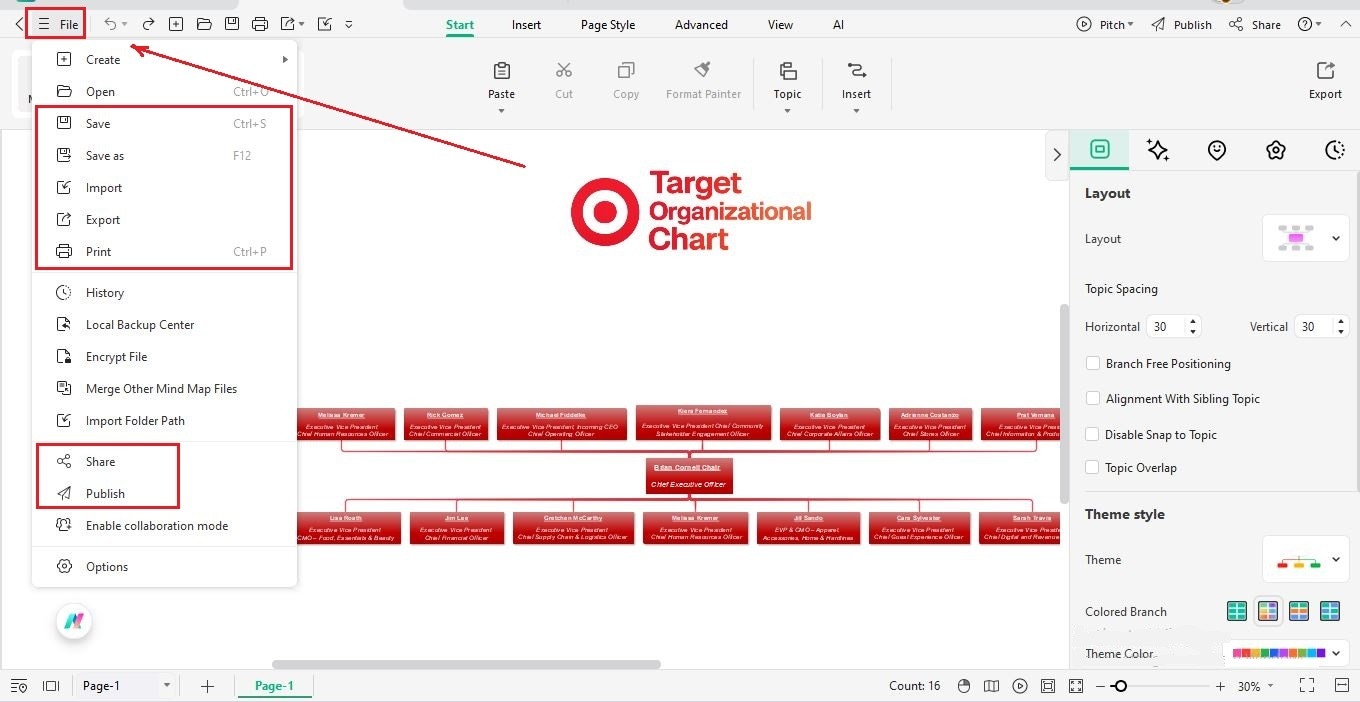
Final Words
Target’s organizational chart is one of the company’s biggest strengths. It enables the top management to make quicker, better decisions while ensuring effective communication across the organization. The balance between functional leadership and regional responsiveness helps Target align its regional goals with the company’s core strategies.



